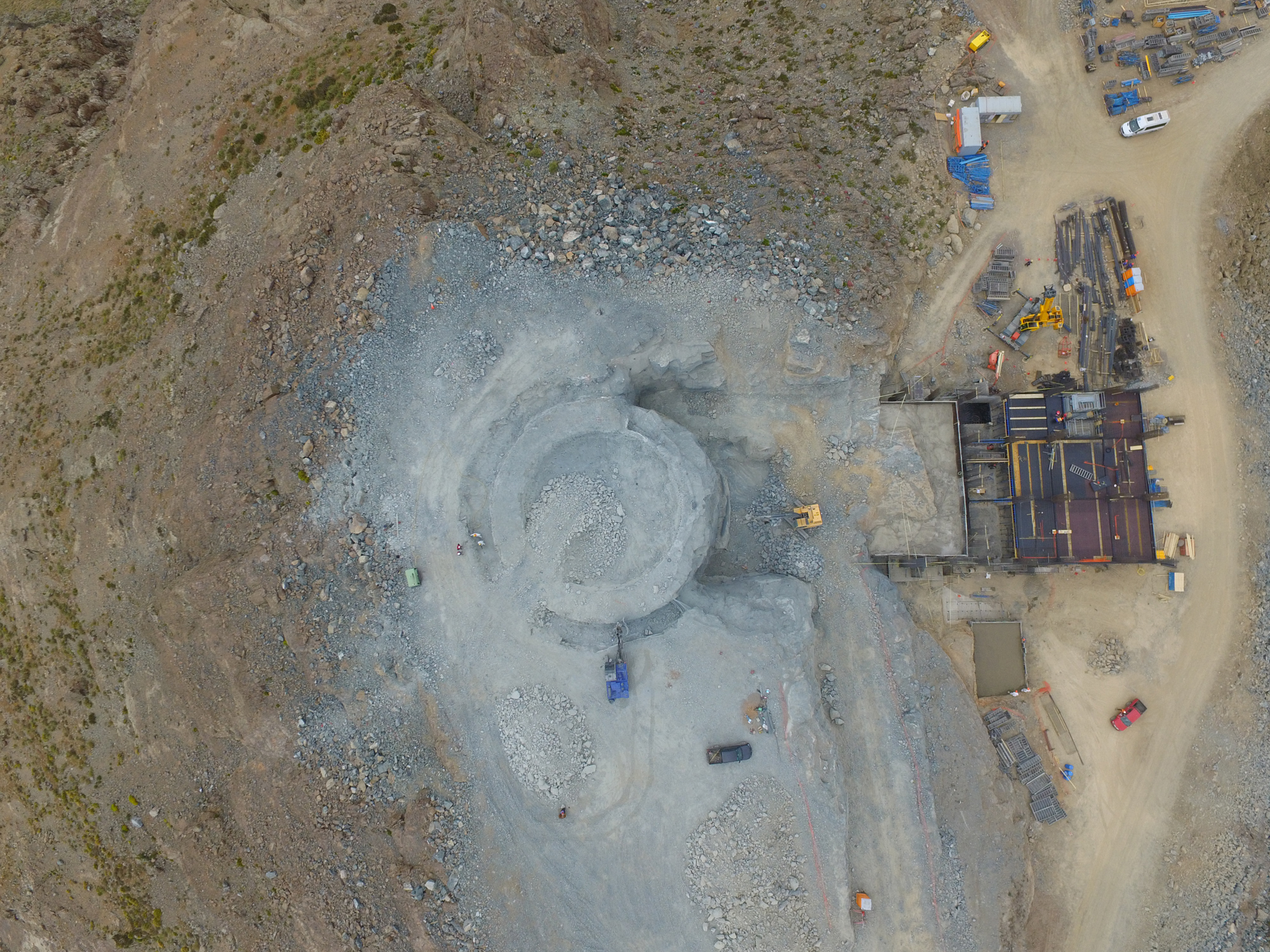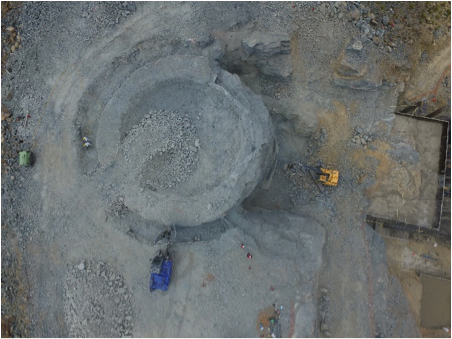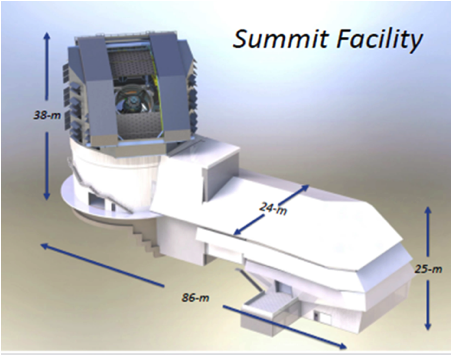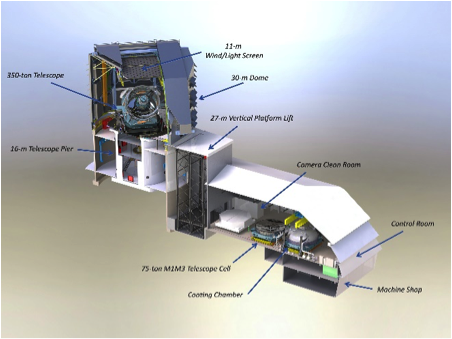
January 12, 2016 - A DJI Phantom 3 Pro Drone is being used on Cerro Pachón to monitor LSST construction progress from a birds-eye view. Multiple images will be used to generate a 3D model of the Summit Facility, suitable for inspection via virtual reality. In these initial images taken by Systems Engineer Jacques Sebag on January 8, 2016, preparation of the telescope pier is clearly visible.
From an altitude of 100 meters, infrastructure for the entire Summit Facility is clearly seen, including the construction of the second floor of the support building (on the right) where the telescope control room, computer room and offices will be located. From an altitude of 30 meters, closer to the actual height of the top of the dome, you can see the telescope pier emerging from the bedrock. The “hole in the donut” is the excavation for the pier foundation, and the recessed ring around it is the base for the foundation of the lower enclosure that will support the dome. The 16-meter diameter by 15-meter-high concrete pier will provide an extremely stiff base structure, to dampen vibration from rapid motion of the telescope in operation and resist damage when the earth moves rapidly in response to seismic events. The summit facility and dome are on schedule to be substantially completed in late 2017.
 |
 |
 |
| Altitude of inspection drone = ~30 meters | The height of the top of the dome above ground level is ~38 meters. | Detailed, cut-away view of the LSST Summit Facility shows how the pieces fit together. |
Financial support for Rubin Observatory comes from the National Science Foundation (NSF) through Cooperative Support Agreement No. 1202910, the Department of Energy (DOE) Office of Science under Contract No. DE-AC02-76SF00515, and private funding raised by the LSST Corporation. The NSF-funded Rubin Observatory Project Office for construction was established as an operating center under management of the Association of Universities for Research in Astronomy (AURA). The DOE-funded effort to build the the Rubin Observatory LSST Camera (LSSTCam) is managed by the SLAC National Accelerator Laboratory (SLAC).
The National Science Foundation (NSF) is an
independent federal agency created by Congress
in 1950 to promote the progress of science. NSF supports basic research and people to create knowledge that transforms the future.
NSF and DOE will continue to support Rubin Observatory in its Operations phase. They will also provide support for scientific research with LSST data.

Contact | Employment | LSST Corporation